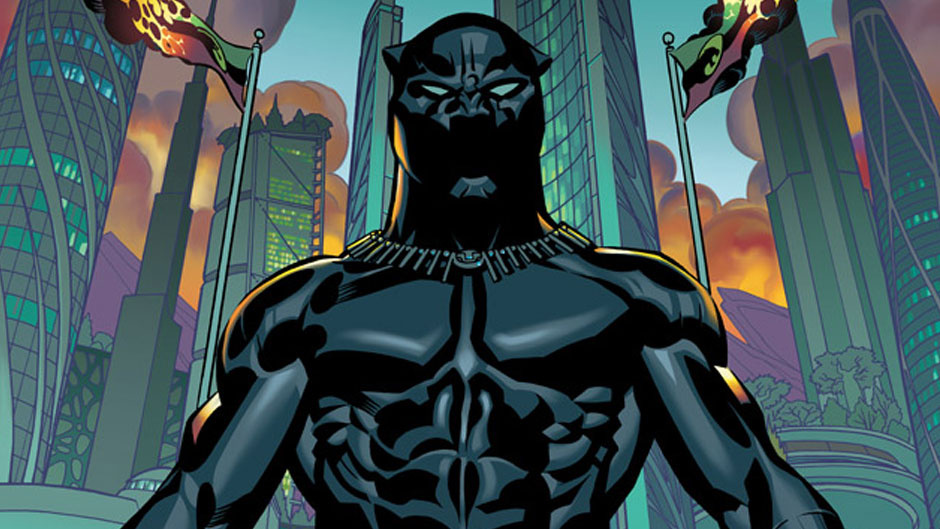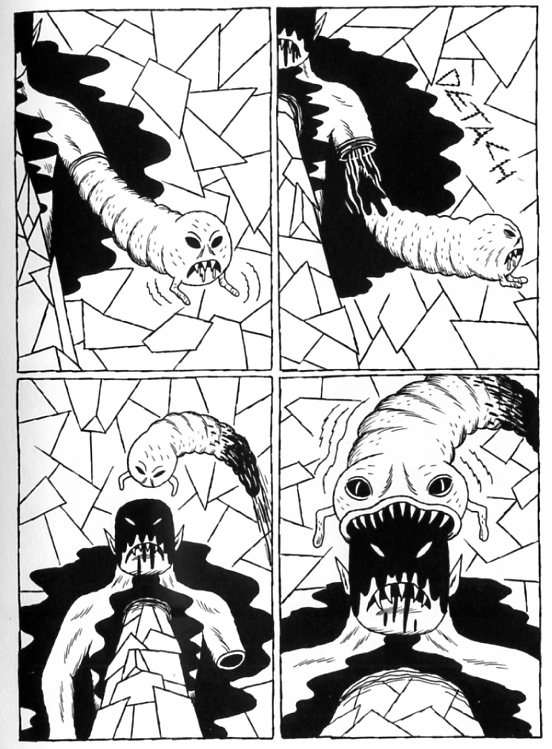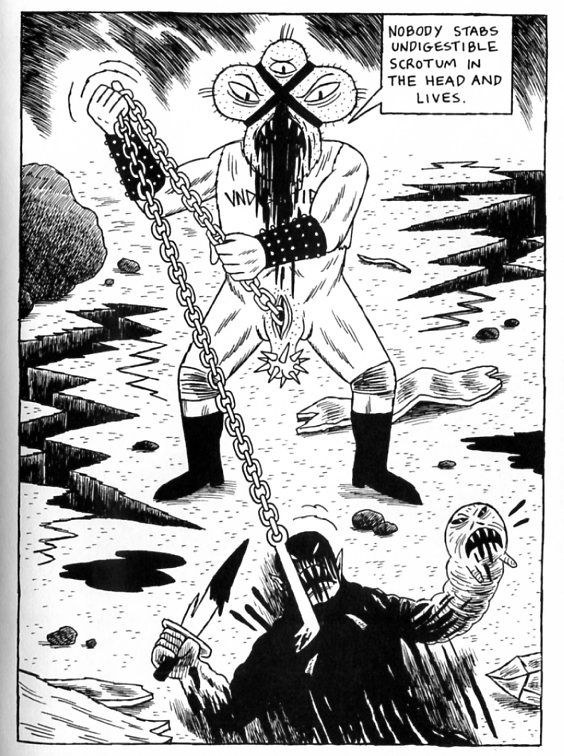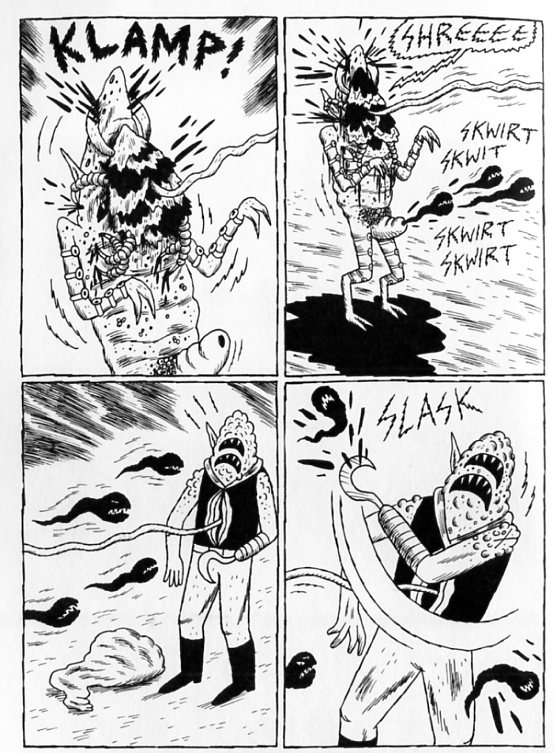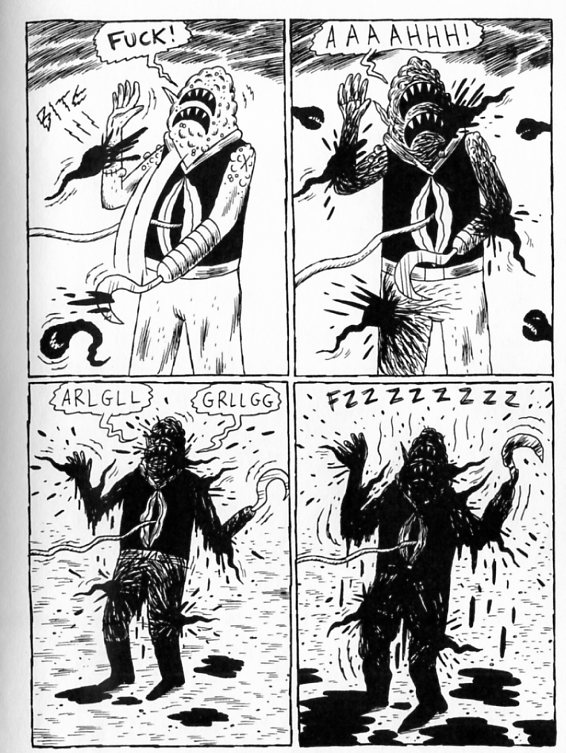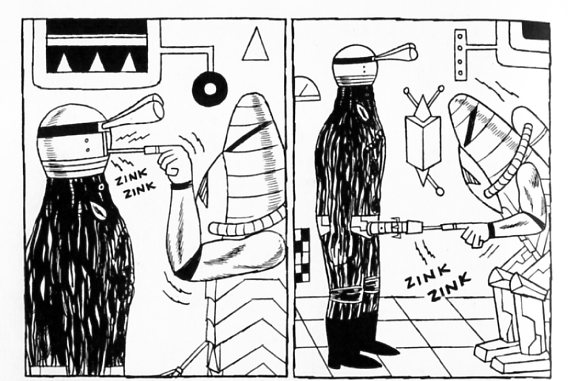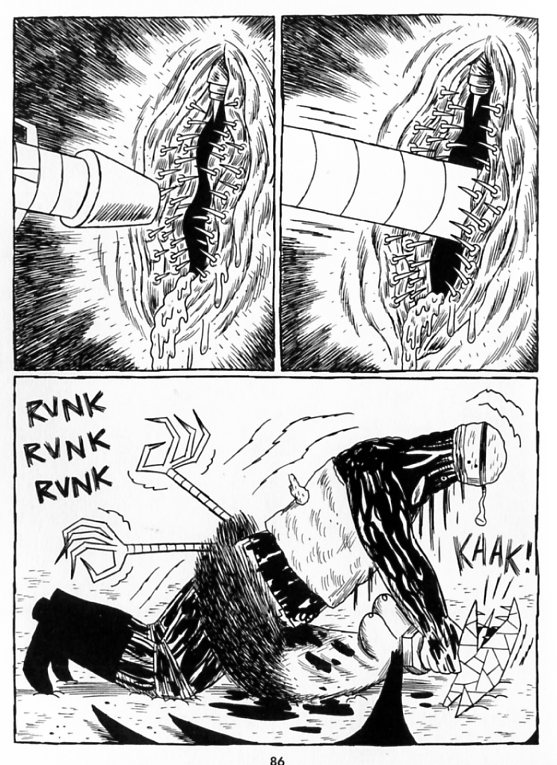
Marvel Comics just managed an astonishing sleight of hand, reaping accolades for addressing a diversity problem it supposedly never had.
Last week, the world freaked out upon learning that Marvel has hired Ta-Nehisi Coates—foremost thinker on race in the U.S. and one of our best writers, period—to sell its comics. And also write one of its titles. You know, whatever. He’s hired.
It is no doubt an important moment in comics—a cool project that will have positive long-term effects for both the medium and the industry—but it strikes me as strange that Marvel, and not Coates, is the one receiving praise for it. Marvel has not enacted a vision; it has leveraged an opportunity. I’m sure if President Obama agreed to revamp X-Men tomorrow that Marvel would frame it in the same self-aggrandizing way.
It has been fascinating to watch the narrative around the news solidify. Curiously, part of it seems to be that Coates’ hire was in response to—or at least somehow in conversation with—the diversity-related critiques surrounding Marvel’s All-New, All-Different campaign, particularly people’s frustrations with its hip-hop variant covers. In a piece that delved into the significance of Marvel hiring an “activist writer,” for instance, The Beat asserted (and reasserted) that Marvel had taken that criticism into account as it made the hires for Black Panther.
From where I’m standing, Marvel hasn’t taken that criticism into account at all; if anything, it continues to revel in its own perfection. But impressions aside the timing is off. Though we don’t know precisely when the Black Panther project coalesced, we do know it stemmed from a conversation about diversity that Coates had with Marvel editor Sana Amanat in May. The variant covers conversation peaked in late July. Alonso’s response to it (“Our doors are open. Always have been.”) went live July 24—and he was already teasing Black Panther. Given how far along the concept seems to be now, you can bet that by late July, Coates’ Black Panther had been in the works for a while. Part of why Alonso could afford to be so smug and dismissive in that CBR interview was because he knew he had an ace up his sleeve—and that ace was Coates (or at least the firm-ish prospect of Coates).
In any case, it seems unlikely that the Coates/Stelfreeze team was conceived of as an emblem—sincere or otherwise—of Marvel’s commitment to inclusive hiring practices. It is a major marketing gimmick (Important Writer Does Comics) with a secondary marketing message (Marvel Is Very Good at Diversity). Note the way in which many major platforms (including, to some degree, Marvel itself, in a press release crowing about Coates’ erudition) gave the news a “You won’t believe what this Serious Man is writing next” treatment. The New York Times piece that announced the project led with that angle. Later in the article, when the author got around to mentioning diversity in corporate comics, it was presented as an industry trend, not a controversy. “Diversity — in characters and creators — is a drumbeat to which the comic book industry is increasingly trying to march.” (The militaristic metaphor is…interesting.) Marvel, we are meant to understand, is leading that march, and to untrained eyes, that’s been happening for a while. Quoth Time, for example: “Marvel has been undergoing its own diversity renaissance since Editor-in-Chief Axel Alonso took over in 2011.”
Let’s take a moment to consider the phrase “diversity renaissance” in all its stupid glory. Diversity in comics is such a huge, multifaceted, and widely misunderstood topic that you can sorta-kinda gesture to it in one area and get your gold star. Thus the person on the street reading the New York Times or Time or whatever thinks of diversity in comics—if they think about it at all—as a positive trend instead of as a variety of ongoing, fraught conversations. They’re not savvy enough to distinguish between representation in Marvel’s fictional universe and its hiring practices, much less even subtler distinctions within editorial and other departments (editors versus writers, for example, or creating a one-off variant cover versus steady work).
Of course, there were plenty of writers with enough wits to describe Marvel’s approach to diversity as something closer to a shitshow than a renaissance. Vulture, for instance, provided a competent summary of recent critiques that have been leveled against the corporation. While that writer was careful to avoid assumptions about a causal relationship between the variant cover critique (and the critiques it dovetailed with) and the Black Panther project, the piece puts those events in conversation with each other in such a way that his caveats don’t count for much. Worse, the breathless awe and heavy hopes expressed in that piece and countless others like it contribute to this sort of nebulous presumption that Ta-Nehisi Coates will not only write a great comic, but also fix Marvel’s abysmal hiring practices, and maybe even Comics in general. And while it’s obviously true that there are ways in which his work for Marvel will help create more opportunities for writers of color, so far as I know, Coates isn’t in charge of hiring anybody. And hiring people (plural) is the quantifiable outcome that people are asking for when they complain about Marvel being too white, too male, and too straight.
“This is a period in superhero history where, more than ever, diversity is a clarion call for fans,” the Vulture piece concludes. “Coates is answering the call, and it will be fascinating to see what he has to say.” Cutting through the considerable buzz surrounding what Coates will say, critics like J.A. Micheline have rightfully emphasized what Marvel has yet to do. With the momentous hire of one (1) black writer, Marvel has been widely perceived as addressing—or at least beginning to address—the deficiencies pointed to by the hip-hop variant covers critique. But in my view, to even begin to address those deficiencies, Alonso or some other prominent person at Marvel must first acknowledge that they exist. Then there needs to be a plan of action—and here I mean a thoughtful, sustained effort towards inclusion, not a glorified product announcement or two—that addresses those deficiencies in a proactive, meaningful way. There should also be a moratorium on Marvel’s lip service to its milieu as a meritocracy, which is obviously a total fucking farce.
Based on Alonso’s statements in that July 24 CBR interview (“interview”), I see no indication that any of that will happen any time soon. What I do see is a man waving around Killer Mike’s approval like a talisman, using him and other people of color—well, men of color—who are icons in their (non-comics) field, hoping to make money off some of their smart thoughts on race by association. Never mind that those men were commenting on the covers themselves, not Marvel’s hiring practices, la-la-la, or that the critiques leveled against Marvel described systemic racism, not individual malice. Axel Alonso is a goddamn Mexican American who gets lots of compliments and he doesn’t intend to let a bunch of white college brats give him grief. No sir!
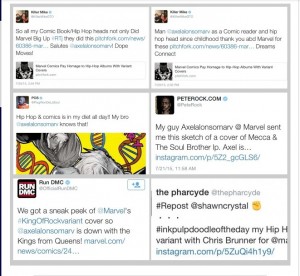
“Hey Comics, Axel here. If you want to level a critique against my company’s hiring practices I suggest you take a long hard look at my ~compliments collage~.”
The Coates hire is sort of Alonso’s “look better by association” strategy on steroids. This time he found a way to get more than just a blurb. Now he’s getting a whole comic. For that, I give Marvel no credit. (Or should I say points?) Where Marvel has positioned itself as bold, progressive, and innovative regardless of what happens next, Coates is the one who will do the work under the weight of watchful eyes. Let’s give him all the points. He’s the one who’s giving a gift to comics—a gift that Marvel, however unworthy a recipient, will incidentally benefit from.
And like a lot of people, I’m super excited about it, with reservations. Chief among them is my suspicion that Marvel is counting on one shining star to eclipse all critiques forever, or at least for the foreseeable future. Already, there’s this: In a week of countless Marvel-centric headlines, not one of them was that Val D’Orazio quit comics.
For every exceptional and uplifting story that Marvel promotes (and how many of those do we get?) there are the stories people swallow. And it’s really hard to write a headline about something or someone that can’t exist. For all intents and purposes, they were never there.
In an industry filled with men endlessly recycling other men’s stories, D’Orazio is another woman whose story is ash in her mouth—a love for comics that died in the spiritual equivalent of a garbage fire.
There’s a certain sense of satisfaction in discussing how dreams die at the hands of bigwigs at the Big Two, who are ready villains. But how many would-be creators have been repulsed by the Progressive Comics™ apparatus that quietly welcomed back Chris Sims after his self-imposed exile from the Internet? Though let it be said it was a torturous 30 days for all involved, I’m so sure.
How many stories were ushered out of this world by the likes of gross creators like Brian Wood? Rumor has it his industry newsletter about the connection between publicly discussing sexual harassment and male suicide went out to some of his female colleagues unsolicited—much like his predatory advances.
How many people have failed to be inspired by less gross creators like G. Willow Wilson, who is waging what must surely be one of the saddest wars in feminism?
How many people internalize the lazy punk rock ethos of well-meaning white men who routinely use conversations surrounding women and PoC in corporate comics to assert their paternalistic, off-topic “you’re so much better than the Big Two” opinions?
There are different degrees of complicity fueled by different motivations, including greed, desire, cronyism, and sheer oblivion. They’re not all bad in themselves, but the fact remains that collectively, they are a problem.
And we will fix it—if we fix it—by looking at those many, many motivations at both the individual and institutional levels. There are no shortcuts. The Reckoning will not be some tidy storyline about a savoir who fixes comics. No one, not even Ta-Nehisi Coates, can live up to that kind of hype.

